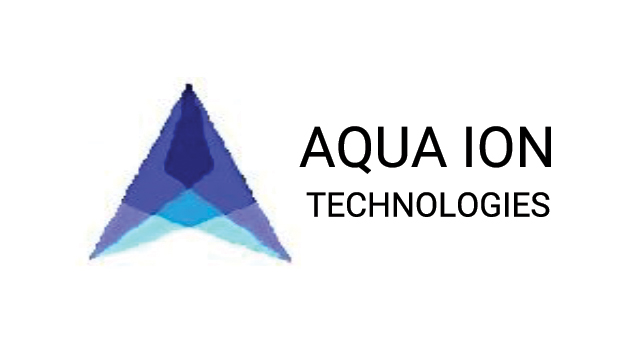Environmental management is a critical discipline that focuses on protecting natural resources, reducing pollution, and promoting sustainability. As the world faces escalating environmental challenges, such as climate change, biodiversity loss, and resource depletion, the need for effective environmental management has never been greater. However, achieving these goals requires more than just policies and technologies—it requires a well-informed and skilled workforce.
Training and education in environmental management play a pivotal role in equipping individuals, organizations, and communities with the knowledge and skills needed to address environmental issues effectively. In this blog, we will explore the importance of training and education in environmental management, their benefits, and how they contribute to a sustainable future.
Why Training and Education Matter in Environmental Management
Environmental management is a multidisciplinary field that encompasses science, technology, policy, and social aspects. To navigate its complexities, individuals and organizations need a solid foundation of knowledge and practical skills. Training and education provide this foundation, enabling stakeholders to:
- Understand environmental issues and their root causes.
- Implement sustainable practices and technologies.
- Comply with environmental regulations.
- Foster a culture of environmental responsibility.
Without proper training and education, efforts to address environmental challenges may fall short, leading to ineffective solutions and missed opportunities for positive change.
Key Benefits of Training and Education in Environmental Management
1. Building Knowledge and Awareness
Training and education programs provide participants with a comprehensive understanding of environmental issues, such as climate change, water scarcity, pollution, and waste management. This knowledge is essential for:
- Identifying environmental risks and opportunities.
- Making informed decisions that balance economic, social, and environmental priorities.
- Raising awareness about the importance of sustainability.
For example, employees trained in energy efficiency can identify ways to reduce energy consumption in their workplaces, contributing to cost savings and environmental protection.
2. Developing Practical Skills
Environmental management requires a range of technical and soft skills, from data analysis and project management to communication and teamwork. Training programs equip participants with these skills, enabling them to:
- Design and implement environmental initiatives.
- Monitor and evaluate the effectiveness of sustainability programs.
- Collaborate with stakeholders to achieve common goals.
For instance, professionals trained in water treatment technologies can operate and maintain systems that ensure clean and safe water for communities.
3. Ensuring Compliance with Regulations
Environmental regulations are constantly evolving, making it challenging for organizations to stay compliant. Training and education help organizations:
- Understand and adhere to local, national, and international environmental laws.
- Avoid legal penalties and reputational damage.
- Demonstrate their commitment to environmental responsibility.
By staying informed about regulatory changes, organizations can proactively address compliance issues and maintain their social license to operate.
4. Driving Innovation and Sustainability
Training and education foster innovation by exposing participants to the latest technologies, trends, and best practices in environmental management. This knowledge enables organizations to:
- Adopt cutting-edge solutions, such as renewable energy systems and circular economy practices.
- Improve resource efficiency and reduce waste.
- Stay competitive in a rapidly changing business landscape.
For example, companies that invest in training for their employees on sustainable supply chain practices can reduce their environmental footprint while enhancing operational efficiency.
5. Empowering Communities and Individuals
Environmental challenges affect everyone, and addressing them requires collective action. Training and education empower communities and individuals by:
- Providing them with the tools and knowledge to take action.
- Encouraging behavior change and sustainable lifestyles.
- Building capacity for local environmental initiatives.
For instance, community-based training programs on waste management can help reduce littering and promote recycling, leading to cleaner and healthier neighborhoods.
6. Enhancing Organizational Performance
Organizations that invest in environmental training and education often experience improved performance in several areas, including:
- Cost Savings: Employees trained in energy and resource efficiency can identify opportunities to reduce costs.
- Employee Engagement: Training programs foster a sense of purpose and engagement among employees, leading to higher morale and productivity.
- Reputation: Demonstrating a commitment to environmental responsibility enhances an organization’s reputation and attracts environmentally conscious customers and investors.
Types of Training and Education in Environmental Management
Training and education in environmental management can take various forms, depending on the target audience and objectives. Some common types include:
1. Formal Education
- Degree Programs: Universities and colleges offer undergraduate and graduate programs in environmental science, sustainability, and related fields.
- Certifications: Professional certifications, such as LEED (Leadership in Energy and Environmental Design) and ISO 14001, provide specialized knowledge and credentials.
2. Workplace Training
- On-the-Job Training: Employees receive hands-on training in environmental practices relevant to their roles.
- Workshops and Seminars: Organizations host workshops and seminars to educate employees about specific topics, such as waste reduction or energy efficiency.
3. Community Programs
- Awareness Campaigns: Public awareness campaigns educate communities about environmental issues and encourage sustainable behaviors.
- Skill-Building Workshops: Local organizations offer workshops on topics like composting, rainwater harvesting, and renewable energy.
4. Online Learning
- Webinars and E-Learning Courses: Online platforms provide flexible and accessible training options for individuals and organizations.
- MOOCs (Massive Open Online Courses): Universities and institutions offer free or low-cost courses on environmental topics.
Case Studies: The Impact of Training and Education
1. Arkey Enviro Care Technology: Empowering Clients Through Knowledge
Arkey Enviro Care Technology, a leader in environmental solutions, emphasizes the importance of training and education in its operations. By providing clients with training on water treatment systems and sustainable practices, the company ensures that its solutions are effectively implemented and maintained. This approach not only enhances client satisfaction but also maximizes the environmental benefits of its technologies.
2. A Manufacturing Company: Reducing Waste Through Employee Training
A manufacturing company implemented a training program to educate employees about waste reduction and recycling. As a result, the company reduced its waste output by 40% and saved thousands of dollars in disposal costs. The program also boosted employee morale and engagement.
3. A Local Community: Promoting Sustainability Through Education
A community organization launched an education campaign to teach residents about water conservation and rainwater harvesting. The campaign led to a 25% reduction in water consumption and increased awareness about the importance of sustainable water management.
The Role of Organizations in Promoting Training and Education
Organizations play a crucial role in promoting training and education in environmental management. By investing in these initiatives, they can:
- Build a skilled and knowledgeable workforce.
- Drive innovation and sustainability within their operations.
- Contribute to broader environmental goals and initiatives.
Companies like Arkey Enviro Care Technology set an example by integrating training and education into their service offerings, ensuring that their clients are equipped to achieve their environmental objectives.
Conclusion
Training and education are the cornerstones of effective environmental management. They empower individuals, organizations, and communities with the knowledge and skills needed to address environmental challenges and promote sustainability. From building awareness and ensuring compliance to driving innovation and enhancing performance, the benefits of training and education are far-reaching.
As we strive to create a more sustainable future, investing in training and education must be a priority. Whether through formal education, workplace training, or community programs, these initiatives have the power to transform how we interact with the environment and ensure a healthier planet for generations to come.
Contact Arkey Enviro Care Technology
Head Office: #99, Perumal Kovil Street, Gerugambakkam, Chennai, 600 128
Phone: +919840096588, +91 90879 10655, +91 99520 20155
Email: info@arkeyenviro.com
Branch Office: #326/4, Mullaistreet, EzhilNagar, Thiruverumbur, Trichy, -620 014
By prioritizing training and education in environmental management, we can build a more sustainable and resilient world. Let’s take action today to ensure a brighter tomorrow.


























